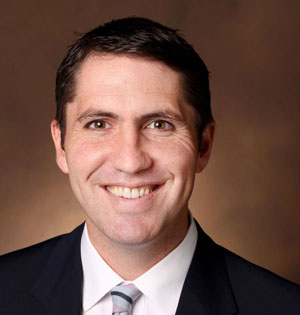by Emily Stembridge
Alexander Gelbard, MD, associate professor of Otolaryngology-Head and Neck Surgery, reported in JAMA Otolaryngology-Head and Neck Surgery that early intervention treatment for acute laryngeal injury after intubation may prevent tracheostomy dependence and the need for additional surgical procedures.

The study evaluated 29 patients with laryngeal injury resulting from endotracheal intubation between 2014 and 2018. Ten patients with intubation injury to the posterior glottis who received early treatment were compared with 19 patients who received late treatment.
Patients who received early intervention — treatment performed 45 days or less after intubation — required fewer total procedures than patients who received late intervention. None of the patients who received early intervention treatment required an open procedure to remove their tracheostomy tube, a process called decannulation, while 90% of late intervention patients required open procedures to remove the tube.
Common conditions and illnesses that can require intubation include heart attacks, pneumonia and more recently, COVID-19. Over time, otolaryngologists such as Gelbard have noticed patients struggling with their voice box after decannulation.
“The tube creates pressure ulcers on the voice box,” Gelbard said. “After the tube comes out, the ulcers heal, creating scar tissue that limits the movement of the vocal cords. When this happens, patients struggle to breathe, even after healing from their illness.”
To improve outcomes after intubation, Gelbard and colleagues decided to address potential injury by identifying people at risk for laryngeal scarring early on, in hopes of helping patients return to normal life after intubation.
Patient populations who are at higher risk for laryngeal injury include people who are diabetic, people who are intubated for more than 12 hours and people who require a tube size larger than 75 millimeters. Once at-risk patients are identified, care providers can examine the voice box and apply anti-inflammatory medicine to prevent early scar formation from becoming deep lesions, which are harder to heal later on.
“Dr. Gelbard’s findings can transform care for these patients who recover from a critical illness, yet regrettably might suffer the sequela of a scarred and crippled larynx, which impairs breathing and speaking,” said Roland Eavey, MD, MS, Guy M. Maness Professor and chair of the department.
“This study is also informed by Dr. Gelbard’s NIH-funded research efforts in laryngeal biology and his extensive surgical laryngeal reconstruction efforts with his partner, Dr. Christopher Wootten. Prevention is paramount in these patients. Despite meticulous and appropriate ICU care, should laryngeal damage unfortunately still occur, it appears that early rather than later surgical intervention is the next best option.”
Although the study was conducted before the rise of COVID-19, the pandemic has only made clinicians more aware of the potential for long-term larynx damage. “An increase in mechanical ventilation for patients with COVID means there’s also been a significant increase in laryngeal injury over the past year,” said Gelbard.
But with collaboration across multiple medical fields, such as otolaryngology, critical care and surgery, Gelbard says this problem can be easily prevented.
“We want to ensure that the entire care team is carefully considering the larynx before and after intubation,” he said. “By doing that, we can alter patients’ lives — restoring their ability to talk and breathe after healing from life-threatening illnesses.”












